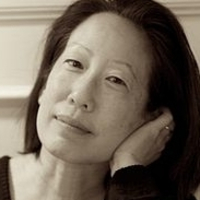
I have always loved reading writers on writing, and the lectures they give especially. The fact that these are typically addressed to a particular audience, and in response to a particular need or occasion seem to give the writers a special license, with results for the reader that are a bit like a raft trip. We would never make all our trips raft trips; we are aware the ride is likely to be idiosyncratic and wet. And yet we embark anyway, sometimes because we know the helmsman, but sometimes, too, because the helmsperson is pushing off with such an oddly determined air.
Lectures on LiteratureBy Vladimir Nabokov

Take, for example, Vladimir Nabokov’s Lectures on Literature. Insisting that “Style and structure are the essence of a book; great ideas are hogwash,” he flies with serene ecstasy in the face of academic dogma, caressing instead the details of a work: the routes of Stephen Dedalus and Leopold Bloom through Dublin in James Joyce’s Ulysses, the wax on the dancing slippers of the eponymous heroine in Gustave Flaubert’s Madame Bovary. “There is no such thing as real life for an author of genius,” he maintains, there is only “the pleasurable shock of artistic truth.” As for whether we agree, exactly, never mind. The lectures and their argument are themselves such a pleasurable shock, we can only be charmed and enlightened.
Aspects of the NovelBy E.M. Forster

E.M. Forster’s Aspects of the Novel, too, arises from a quarrel with academia, or at least its “pseudo-scholars,” with their stupid plodding insistence on periods and chronology. Victorian England, the Industrial Revolution, Modernism—forget all that! he tells us. Let us look at novels as if they are all being written simultaneously—as if novelists are all at work together in a circular room. And, looking over their shoulders as they do, he produces insight after insight we writers find indispensable to this day: “The king died and then the queen died is a story. The king died, and then queen died of grief is a plot,” he brilliantly observes, for example. And: “We may divide characters into flat and round.” Yes.
A Room of One’s OwnBy Virginia Woolf

Less technically revelatory but more foundationally revolutionary is Virginia Woolf’s A Room of One’s Own. “But, you may ask, we asked you to speak about women and fiction—what has that got to do with a room of one’s own?” she gently begins. And from there she winds on, proceeding, eventually, to proffer a “minor point”—namely that “a woman must have money and a room of her own if she is to write fiction.” She spends far more time disarming her reader than Nabokov or Forster. “Lies will flow from my lips, but there may perhaps be some truth mixed up with them,” she says, insisting it is up to her audience to decide whether any part of her argument is “worth keeping.” As for what is up for consideration, that is the question of what would have happened “had Shakespeare had a wonderfully gifted sister, called Judith, let us say.” Indeed.
Playing in the Dark: Whiteness and the Literary ImaginationBy Toni Morrison

We can only imagine the mixed passion with which Woolf wrote her talks—the degree to which she understood their necessity and focused her powers accordingly, even as she would have perhaps preferred to be working on a novel. It’s hard to know whether Toni Morrison felt similarly ambivalent as she sat down to write Playing in the Dark: Whiteness and the Literary Imagination. Who, after all, wants to bellyache? She at least has more confidence in her audience, though, perhaps because she is delivering the Massey lectures (as I did with Tiger Writing)—which is to say speaking to a Harvard audience not averse to be woken up in some way. (Quite the contrary—it is hoping and expecting it will be.) In any case, we get from Morrison the magisterial: “For reasons that should not need explanation here, until very recently, and regardless of the race of the author, the readers of virtually all of American fiction have been positioned as white.” Looking coolly at how “a nonwhite, Africanist presence and personae have been constructed—invented—in the United States, and of the literary uses this fabricated presence has served,” her inquiry is notably notable and sophisticated.
Create DangerouslyBy Edwidge Danticat

More anguished and inconclusive is Edwidge Danticat’s Create Dangerously, a braided meditation on the charge and experience of writing as an immigrant. Drawing on Albert Camus’ essay of the same name, she invokes his words: “Art cannot be a monologue. We are on the high seas. The artist, like everyone else, must bend to his oar, without dying if possible.” And so it is that we must, says Danticat, “Create dangerously, for people who read dangerously … Writing, knowing in part that no matter how trivial your words may seem, someday, somewhere, someone may risk his or her life to read them.” Of course, the out-and-out murderous are not the only danger; there are lesser silencers, too. “The things she writes, they are not us,” says one Haitian. And another: “You dishonor us.” Yet still Danticat perseveres, telling story after story—reclaiming people’s stories and creation myths and, with them, their souls. How Nabokov—though himself an immigrant—would despise all this bearing of witness, all this focus on the real, all this use of art for salvation! But so what? As glad as I was to be on his raft, I was glad, too, to be on Danticat’s for a while, and not anxious to get off.






